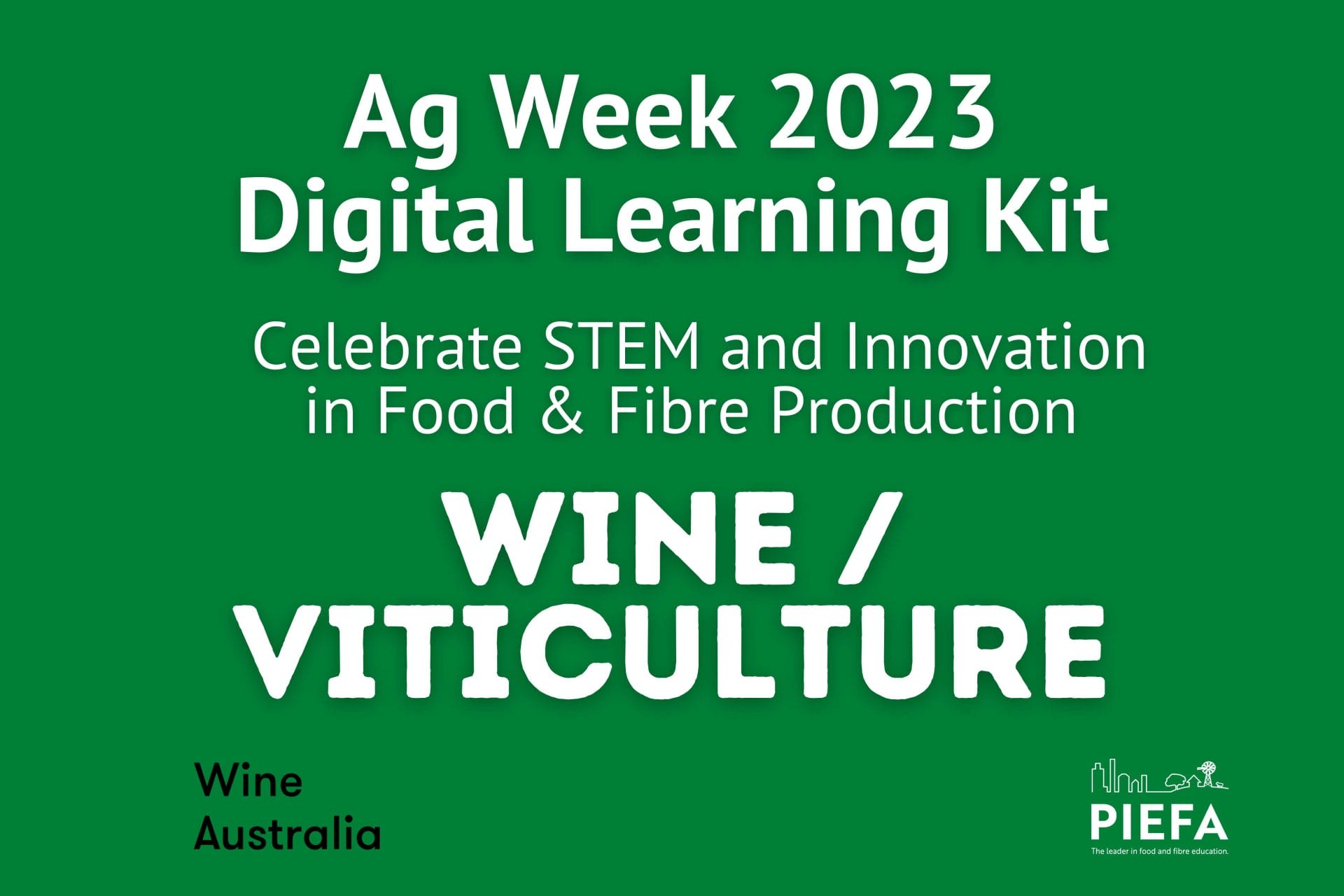Wine | Ag Week 2023 Digital Learning Kit

Produced By:
PIEFA
States:
Qld, NSW, SA, NT, ACT, Tas, WA
Aimed at:
Year k
- 10
Curriculum 8.4
Curriculum 9.0:
AC9TDEFK01, AC9SFH01, AC9TDE2K01, AC9TDE2K03, AC9S1H01, AC9S2H01, AC9TDE4K01, AC9TDE4K03, AC9S3H02, AC9S4H02, AC9TDE6K01, AC9TDE6K03, AC9S5H02, AC9S6H02, AC9TDE8K04, AC9TDE8K02, AC9TDE8K01, AC8S7H03, AC9S8H03, AC9TDE10K01, AC9TDE10K02, AC9TDE10K04, AC9S9H02, AC9S9H04, AC9S10H02, AC9S10H04,,
Lesson Type:
Subjects:
Keywords:
Ag Week, wine, viticulture, 5 questions, technology, innovation, STEM, farms, sustainability, wine, NASA, automation, production
Wine | Ag Week 2023 Digital Learning Kit
Learn about Amanda’s experience and knowledge spanning over 30 years in the viticulture industry. Hear about the changes in technology in predicting crop yield, from individually counting bunches of grapes on vines, cutting and weighing them, to now using the innovative technology of Capture Actual Time. This technology allows the precise weights of the fruit to be measured whilst growing on the vine every hour in real-time. This is highly beneficial as the data delivered to the grower can be used to track yield and make informed decisions about how the fruit is developing to meet specific production and market requirements.
Significant savings from this technology are reduced labour requirements and water use efficiency. Growers can manage water use more effectively and identify the optimal time of day to harvest, leading to a decrease in operational costs and improved fruit quality.
Amanda provides an understanding of how careers in viticulture encompass a variety of disciplines across the supply chain. She highlights how every growing season is different, and with integrated technology, the industry can improve environmental sustainability whilst remaining financially viable.
Learn about one of the very few carbon neutral wineries in Australia. The winery’s journey to becoming carbon neutral began in 1998 when trees were planted to revegetate the property. In 2008, the winery undertook its first carbon audit to start looking at ways to lower its carbon footprint.
Concerns with the heat stress on employees and customers in the winery’s restaurant prompted a variety of innovations to target improved energy efficiency, usage, and emissions. These strategies included using special paint (“NASA rocketship paint”) to cover the restaurant roof to reflect heat, installing solar panels, upgrading chillers, and revegetation on the vineyard. These actions have allowed Tahbilk Winery to decrease its energy footprint considerably.
Sensors are used around the trunks of the grapevines in the vineyard to measure changes in trunk diameter as the vines take in water. These sensors help the staff at Tahbilk Winery to know exactly how much water each vine needs, improving water efficiency in the vineyard.
This resource was produced as part of PIEFA’s Ag Week 2023 Activities but can be used at any point and incorporated into your lesson plans throughout the year.


